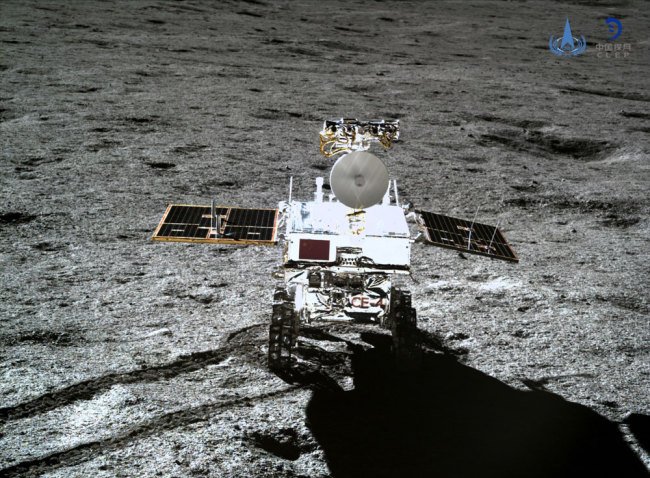Broad measure of R&D funding up 11.6% YoY in 2018.
BEIJING, March 3 (Xinhua) -- China's spending on research and development (R&D) increased to 2.18 percent of its GDP last year, up by 0.06 percentage points, according to the National Bureau of Statistics (NBS).
China spent over 1.96 trillion yuan (about 293 billion U.S. dollars) on R&D in 2018, up 11.6 percent compared with that in 2017, according to the NBS.
The number of patent applications saw a year-on-year increase of 16.9 percent last year, amounting to 4.32 million home and abroad.
According to the Global Innovation Index, China's global ranking in terms of innovation jumped from the 22nd in 2017 to 17th in 2018.
Article on upcoming MAGLEV trains from CRRC. I'm assuming they mean indigenous design, not the Siemens train in Shanghai.
BEIJING, March 3 (Xinhua) -- China will roll off a new generation of self-developed driverless maglev trains with a designed speed of 200 km per hour in early 2020, according to its lead developer.
Once put into operation, they will be the fastest maglev trains for commercial use in China. CRRC Zhuzhou Locomotive Co.,Ltd. leads the efforts to develop the trains.
Zhou Qinghe, chairman of the company, told reporters Sunday prior to the annual session of the national legislature that new technologies are being used to enable the trains to travel faster and have greater hill climbing power. The latest maglev trains are also equipped with a "powerful brain" to realize safe and reliable autonomous operation.
Zhou, who is also a deputy to the National People's Congress, said the new trains are suitable for inter-city or urban transit between 50 and 200 km in distance. They will also be the world's first maglev trains to run at 200 km per hour, he added.
LANZHOU, Feb. 27 (Xinhua) -- Researchers have developed a new type of ceramic aerogel which can be used in thermal insulation.
The new ceramic aerogel, developed by Chinese and American researchers, has strong mechanical and thermal stability, as well as excellent performance in transformation and toughness.
Aerogels, made of ceramics, carbon, or metal oxide, have a robust structure, said Zhang Qiangqiang, a professor at Lanzhou University in northwest China's Gansu Province.
Previous ceramic aerogels were plagued by poor mechanical stability and degradation under thermal shock. The new material is considered an ideal thermal insulation material due to its low density, low thermal conductivity, and fire resistance.
The new aerogel maintained great mechanical stability throughout hundreds of severe thermal changes between minus 198 degrees Celsius and 900 degrees Celsius. It had less than one percent degradation under thermal shock.
Lightweight aerogels are promising replacements for thermal insulation. Ceramic aerogels are ideal for thermal superinsulation under extreme conditions, such as those encountered by spacecraft.
BEIJING, March 3 (Xinhua) -- China's spending on research and development (R&D) increased to 2.18 percent of its GDP last year, up by 0.06 percentage points, according to the National Bureau of Statistics (NBS).
China spent over 1.96 trillion yuan (about 293 billion U.S. dollars) on R&D in 2018, up 11.6 percent compared with that in 2017, according to the NBS.
The number of patent applications saw a year-on-year increase of 16.9 percent last year, amounting to 4.32 million home and abroad.
According to the Global Innovation Index, China's global ranking in terms of innovation jumped from the 22nd in 2017 to 17th in 2018.
Article on upcoming MAGLEV trains from CRRC. I'm assuming they mean indigenous design, not the Siemens train in Shanghai.
BEIJING, March 3 (Xinhua) -- China will roll off a new generation of self-developed driverless maglev trains with a designed speed of 200 km per hour in early 2020, according to its lead developer.
Once put into operation, they will be the fastest maglev trains for commercial use in China. CRRC Zhuzhou Locomotive Co.,Ltd. leads the efforts to develop the trains.
Zhou Qinghe, chairman of the company, told reporters Sunday prior to the annual session of the national legislature that new technologies are being used to enable the trains to travel faster and have greater hill climbing power. The latest maglev trains are also equipped with a "powerful brain" to realize safe and reliable autonomous operation.
Zhou, who is also a deputy to the National People's Congress, said the new trains are suitable for inter-city or urban transit between 50 and 200 km in distance. They will also be the world's first maglev trains to run at 200 km per hour, he added.
LANZHOU, Feb. 27 (Xinhua) -- Researchers have developed a new type of ceramic aerogel which can be used in thermal insulation.
The new ceramic aerogel, developed by Chinese and American researchers, has strong mechanical and thermal stability, as well as excellent performance in transformation and toughness.
Aerogels, made of ceramics, carbon, or metal oxide, have a robust structure, said Zhang Qiangqiang, a professor at Lanzhou University in northwest China's Gansu Province.
Previous ceramic aerogels were plagued by poor mechanical stability and degradation under thermal shock. The new material is considered an ideal thermal insulation material due to its low density, low thermal conductivity, and fire resistance.
The new aerogel maintained great mechanical stability throughout hundreds of severe thermal changes between minus 198 degrees Celsius and 900 degrees Celsius. It had less than one percent degradation under thermal shock.
Lightweight aerogels are promising replacements for thermal insulation. Ceramic aerogels are ideal for thermal superinsulation under extreme conditions, such as those encountered by spacecraft.


